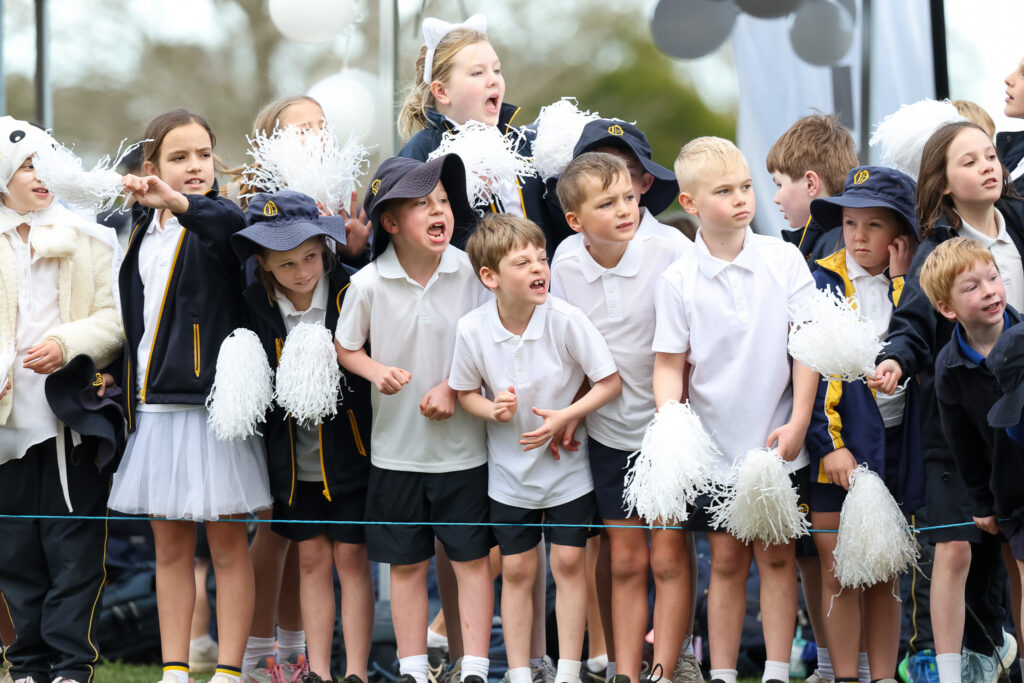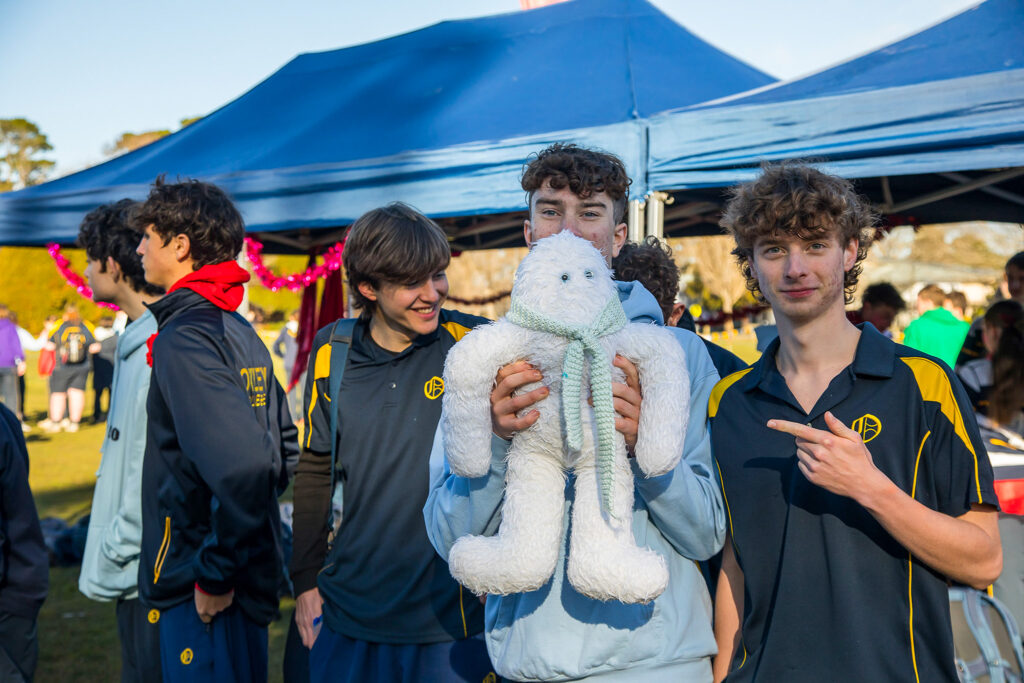Year 9 discusses ‘Romeo and Juliet’
In Semester 1 English, Year 9 explored adaptations and appropriations of Shakespeare’s classic romantic tragedy, Romeo and Juliet, and tangled with the age-old question – which one is best?
When asking, ‘Which would you rather watch?’, there’s lots of things to consider. Like, why do you watch something? Do you watch it to see and hear gorgeous, romanticised beauty? Do you watch it because it’s a new, dramatic, and different take on an idea? Or do you watch it to experience the original, and experience some of the purest forms of Renaissance poetry? Well, in the dialogue between the two lovers at the Capulet party in ‘Romeo and Juliet’, there are three versions that do at least one of the aforementioned things, which I will be discussing in this response.
Shakespeare’s text, obviously, is a very important version of this score. It’s the original! The themes of this text, at least a lot of them, are represented in this scene. The theme of courtly love, for instance, is a large one in this play, and, if it was performed as it was in Shakespeare’s time, would give one of the most accurate representations of a form of romance nearly extinct in the present day. The rich, poetic language from both characters shows the wit of Shakespeare, and the characters he makes. Another theme in Shakespeare’s play is religion. What now has sort of slipped into a less integral, although more often controversial topic, was the norm back when the play was written. This dialogue uses tonnes of religious imagery, speaking of cleansing sins, shrines and holiness. While in some versions, the lines were similar, even some with the exact dialogue, I think that Shakespeare’s play could best portray the metaphors both parties are using. People were just more invested in those ideas in his time, and it made much more sense for these to be in this scene. Both these ideas would be best represented in a performance completely and utterly true to the one’s in Shakespeare’s time.
However, the acting, props, costumes and stages back in those times, even though they’re authentic, may not be the ‘best to watch’. That title goes to Franco Zeffirelli’s 1968 film, which is known as one of the most beautiful representations of Romeo and Juliet, and even might be considered one of the most beautiful films of all time. To put this dialogue into context, it’s in a luscious party, which Zeffirelli captures and fills with vibrant costumes and beautiful music. He created a completely original and unique dance for the scene, which even it in of itself could represent the beauty of this film. And then, wen the dialogue comes about, the two actors are almost certainly the best actors to fill the stereotypical ‘beautiful teenager’ roles. Again, the costumes, with Juliet’s crimson dress and well done, even somewhat exotic hairstyle creates an almost otherworldly in the scene. While it uses basically the exact same lines as the original texts, the beauty of the poetry and imagery is almost outshone by the simply stunning nature of the scene. This scene’s kiss is one of the most famous in literary history, and it is captured so well in this version. However, even though it looks and sounds stunning, it simply doesn’t do anything new with ‘Romeo and Juliet’. While at may be worth watching just because of how pretty it all is, its boldness and dramaticism is nothing like the next example.

West side story is one of the most renowned films of all time. Winning countless awards, it is one of the most unique and best executed takes on Romeo Juliet. Turning a romantic, Italian, gorgeous love story into one of racism and American gang violence isn’t the most obvious moves in the world, but was done impeccably. The whole film is so bold and dramatic in how it goes about telling its story, and this scene is no exception. While Zeffirelli’s party was beautiful and pristine, West Side Story’s is an excitingly chaotic blur, which perfectly encapsulates one of the film’s themes, which will be talked about later. It even has arguably the most difficult and complex pieces of film music ever written for it, the song ‘Mambo’. This fast-paced piece shows the buzz of the room, and even shows the conflict between the two gangs in its sharp, call and response motifs. However, out of the hustle and bustle come the two protagonists, suddenly in a spotlight, with the outside world shut out. This quiet scene establishes the theme of independence, makes for a beautiful moment, and quite tactfully shows the role of the lover’s romance in the story. This beauty is different to Shakespeare’s and Zeffirelli’s, it’s something new. This ‘new’ beauty makes West Side Story the one I’d watch. Even though it strays quite far from the original, with new themes, ideas, settings and characters, its experimentation is rewarded. It’s one of the most exciting and unique takes on Romeo and Juliet, which is what got it its critical acclaim.

So, overall, I’d watch West Side Story. The original, of course, has its merit. It shows the time well, and would be fascinating to see, but doesn’t capture the energy or beauty of the other two. Zeffirelli’s version is always a joy to watch, but doesn’t do anything new. I may be biased, due to its famous and exciting soundtracks being one of the most renowned in film history, but West Side story completely captures the essence of Romeo and Juliet, while also doing something new, dramatic and exciting. Overall, it’s the one I would watch, and would recommend to anyone.
Robbie N, Year 9
Which would you rather watch? A simple question yet a complicated answer. This is a question I am very sure many have wondered while browsing on Netflix or YouTube, when finding something to watch. Well, what if the two things available to watch were the same movie or series? Which one would you pick? I was pondering the same question when I was much younger, would I watch ‘Avatar: the last Airbender’ the series, in a cartoon version, or the live-action version. Well, the cartoon version ended up being a lot better that the live-action due to a multitude of factors. This is yet again the question I am being asked, this time in an exam setting about two versions of a scene from Shakespeare’s ‘Romeo and Juliet’. As of now, I have no stance on the question’s answer, but I know that by the end of this text, we will have a very clear answer, Zeffirelli’s ‘Romeo and Juliet’ or Baz Luhrmann’s ‘Romeo and Juliet’.
Act 1, Scene 5, our main focus; this scene starts out with Romeo at the Capulet’s costume party, dressed for the occasion, while Juliet is seen dancing in the crowd. “O’, she doth teach the torches to burn bright, it seems it is upon the cheek of night, like a rich jewel on an Ethiop’s ear”. This is the start of a phrase Romeo is seen muttering to himself in both versions of the scene, using a simile to magnify her profound beauty. It also conveys that he has fallen in love with Juliet. In Baz Luhrmann’s version of Shakespeare’s script, Romeo is dressed in knights armour, while Juliet is dressed as a fairy and is dancing with an astronaut, from which we can see that who she’s dancing with is not the perfect man for her. However, in Zeffirelli’s version, all of the characters are wearing traditional Elizabethan-era style clothing, to keep Shakespeare’s original costume intentions. Both versions of the scene are very different with Baz Luhrmann’s providing a more modern and new style while Zeffirelli’s is more traditional and structural. This point has to go to Baz Luhrmann’s version, for opening the playing field with a new and fresh perspective.

Later on in Act 1 Scene 5, Romeo is seen behind a pillar, reaching for Juliet’s hand, where they first meet. “If I profane with my unworthiest hand, this holy shrine, the gentle sin is this: My lips, two blushing pilgrims ready stand to smooth that rough touch with a tender kiss,” Romeo says to Juliet, after running into her behind the pillar. This extract is seen to be the start of a sonnet with a Shakespearean rhyming scheme, which Juliet later continues, “O’ good pilgrim, you do wrong your hand too much… palm to palm is holy palmer’s kiss,” she continues, appearing to be completely and truly in love with Romeo. This extract from Juliet helps to continue the sonnet, which often symbolises love and is regarded as a love poem. This part of the scene is represented in Baz Luhrmann’s movie, with both characters meeting behind a pillar, then rushing into an elevator when Juliet’s nurse is looking for her. At last, Juliet has found her knight in shining armour, and the heavy symbolism placed on the costumes seems to signify as such. However, in Zeffireli’s version, Juliet seems shyer and a little more unwilling to kiss Romeo; a guy she barely knows. This seems and feels more real and helps to relate to the audience. This point goes to Zeffireli, the score is now at one all, and this next quote should help to show us who the true winner is.
Near the end of Act 1, Scene 5, the two ‘star-crossed-lovers’ are pulled away from each other as Tybalt is on the hunt for Romeo, and Nurse is seen to be searching for Juliet. Neither of the lovers have figured out that both their lives are in danger due to their family’s ongoing feud. This is conveyed in Romeo’s quote, ‘my only love sprung from my only hate’. This shows that even though they are from feuding houses, they are still very much in love. This is shown in Baz Luhrmann’s version with Juliet looking down on Romeo from the top of the stairs, signifying her power. This is also shown in Zeffirelli’s version, when they are looking across at each other from opposite ends of the ballroom. This shows that both are on the same level, facing the same struggles, due to their infatuated love for one another. This point has a clear winner, which goes to Baz Luhrmann, who has taken a lot of creative liberty in his movie adaptation of ‘Romeo and Juliet’ but still has managed to make the movie more relatable for today’s day and age of people watching it.
I think we all know what the answer is to the question we have been pondering and delving into, over the course of this text; “Which would you rather watch”. I think it’s safe to say that, that question has been extensively and truthfully answered. Though Zeffirelli has done an amazing job with his movie by sticking to the guidelines completely, it wouldn’t hurt for him to take some liberty of his own and to add some more modern features, or simply symbolic features into his movie. Unlike Zeffirelli, Baz Luhrmann, has taken liberty in his movie, and has added more creative and modern features, which help to make the movie easier to follow along with, Overall, Baz Luhrmann is the clear winner of this long-asked question, so which one would I rather watch? I would most definitely watch Baz Luhrmann’s version of ‘Romeo and Juliet’.
Souhaylah S, Year 9










































































































































































































